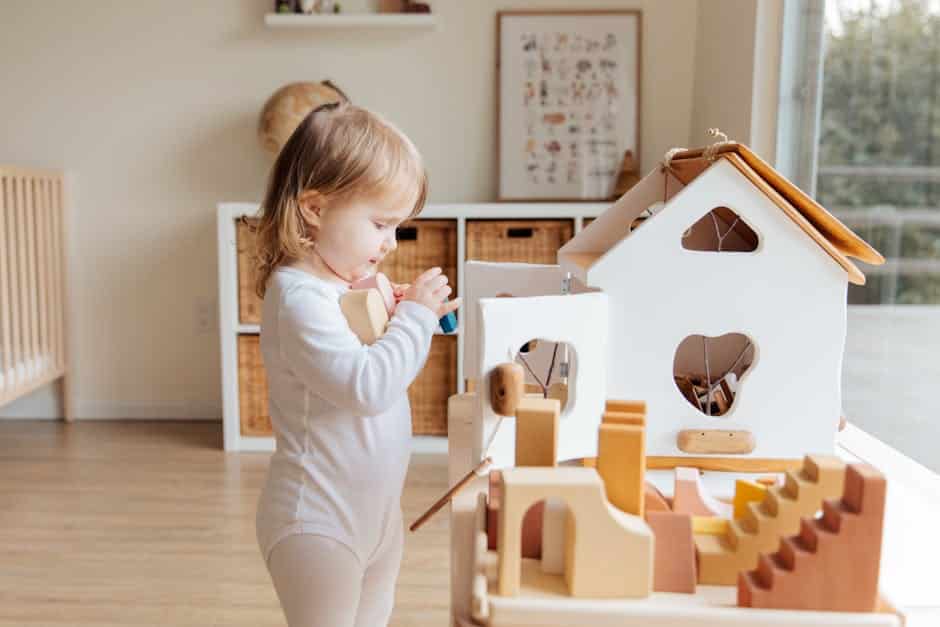The Benefits of Building Toys for Spatial Awareness
Building toys have fascinated children for generations, transforming playtime into a learning opportunity. Beyond the fun, these toys are instrumental in developing spatial awareness, a crucial cognitive skill. In this blog post, we’ll explore the myriad benefits of building toys for spatial awareness and why they’re essential for your child’s development. 🧩
Table of Contents
1. Introduction to Spatial Awareness
2. Key Benefits of Building Toys
3. Popular Building Toys for Kids
4. Choosing the Right Building Toy
5. Conclusion
6. FAQs
Introduction to Spatial Awareness
Spatial awareness is the ability to understand and interact with the space around us. It’s how we perceive the position, size, and shape of objects and how we relate to them physically. For children, developing this skill is essential as it impacts their daily activities, from navigating their environment to engaging in sports and solving puzzles.
Building toys, such as blocks, LEGO sets, and magnetic tiles, offer a hands-on approach to enhancing spatial skills. By engaging in play, children learn to visualize and manipulate objects, which lays the groundwork for complex problem-solving and critical thinking later in life.
Key Benefits of Building Toys
1. Enhancing Problem-Solving Skills
When children engage with building toys, they are essentially solving a puzzle. They must determine which pieces fit together and how to construct their desired structure. This process encourages trial and error, fostering resilience and adaptability. As they experiment with different configurations, they learn to approach problems from various angles. 🔍
2. Encouraging Creativity and Imagination
Building toys allow children to create whatever they envision, unrestricted by predefined outcomes. This freedom promotes creativity, as kids can build castles, cars, or even fantastical creatures. The ability to bring their imaginations to life is not only rewarding but also a critical component of creative thinking. 🌈
3. Improving Fine Motor Skills
The manipulation of small building pieces requires dexterity and precision, which helps refine fine motor skills. As children grasp, stack, and align pieces, they enhance their hand-eye coordination and finger strength, skills that are vital for writing and other daily tasks. ✋
4. Boosting Spatial Reasoning
Spatial reasoning is the ability to visualize and manipulate objects mentally. Building toys provide a practical avenue for developing this skill. Children learn to predict how different pieces will come together to form a structure and how altering one piece might affect the entire build. This skill is not only vital in everyday activities but also in STEM fields. 🚀
5. Promoting Social Skills and Teamwork
Building toys often involve group play, where children collaborate to create a project. This interaction fosters communication, negotiation, and teamwork. Kids learn to share ideas, listen to others, and work towards a common goal, all of which are valuable social skills. 🤝
Popular Building Toys for Kids
The market offers a plethora of building toys tailored to different ages and interests. Here are some of the most popular options:
LEGO Sets
LEGO is synonymous with building toys. Known for their versatility, LEGO sets range from simple configurations for younger children to complex models for older kids and adults alike.
Magna-Tiles
These magnetic tiles are perfect for building 3D structures. The magnetic aspect adds an extra layer of intrigue, making them a favorite among young builders.
K’NEX
K’NEX sets offer a different take with their interlocking pieces that encourage the construction of moving models. They are great for kids interested in mechanics and engineering.
Wooden Blocks
A timeless classic, wooden blocks come in various shapes and sizes, providing endless opportunities for open-ended play.
Choosing the Right Building Toy
When selecting a building toy for your child, consider their age, interests, and developmental needs. Younger children may benefit from larger, easy-to-grasp pieces, while older kids might enjoy more intricate and challenging sets. It’s also essential to opt for high-quality, durable toys that can withstand the rigors of play.
Pay attention to the material and safety standards of the toys. Non-toxic materials and rounded edges are crucial factors to ensure your child’s safety.
Conclusion
Building toys are more than just a source of entertainment; they are powerful tools for developing spatial awareness and a host of other critical skills. By integrating these toys into playtime, parents can provide their children with a foundation for lifelong learning and success. So, the next time you’re considering a gift for your little one, remember that a simple set of building blocks could be the key to unlocking their potential. 🚀
FAQs
What age is best to start using building toys?
Building toys can be introduced as early as 12 months, with larger, easy-to-handle pieces. As children grow, more complex sets can be introduced to match their developing skills.
Can building toys help with math skills?
Yes! Building toys enhance spatial reasoning, which is closely linked to mathematical skills. Children learn concepts like symmetry, geometry, and balance through play.
Are building toys suitable for both boys and girls?
Absolutely! Building toys are gender-neutral and beneficial for all children. They encourage creativity, problem-solving, and teamwork regardless of gender.
Incorporating building toys into your child’s playtime is an investment in their cognitive development. Happy building! 🏗️
